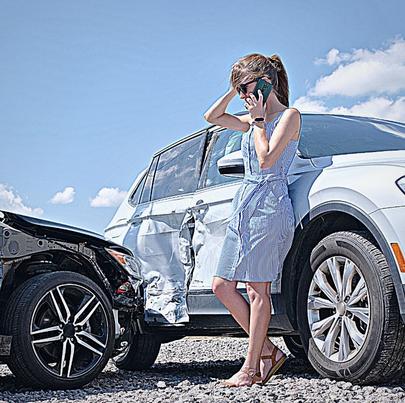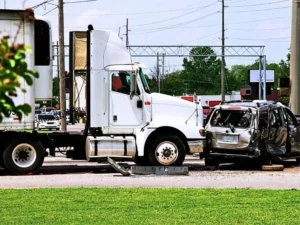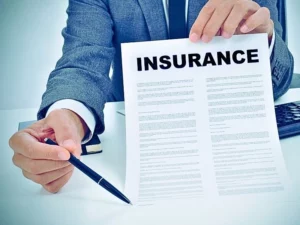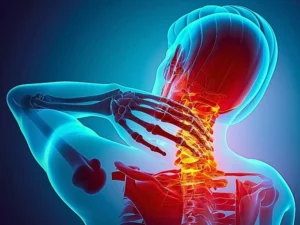If you cause a car accident in Illinois, you might ask, “should I get a lawyer for a car accident that was my fault?” You need a lawyer conversant with personal injury and comparative negligence laws in Illinois to improve your odds of recovering compensation, even if you were at fault for a car accident. These laws allow you to pursue damages for your injuries, even if you were partially at fault for a car accident.
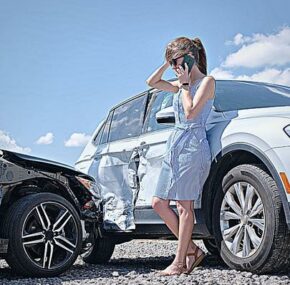
Determining the liability of each involved party is a daunting process. This process requires multiple forms of evidence, ranging from photographic and video evidence to witness statements and expert witness testimony. A car accident lawyer can help you compile sufficient evidence and raise arguments necessary to reduce your percentage of fault and maximize your compensation.
What to Do If You Think You Caused a Car Accident
A car accident can leave you scared and confused to the point of making mistakes, such as fleeing the accident scene. This is especially true if you think you are at fault for the crash. Running from the crash scene is unlawful, however, and can compromise your rights.
Remember, you might still be eligible for compensation even if you partially contributed to the accident. Knowing what to do if you think you caused a car accident can make the difference between a successful and a failed car accident claim. The following after-accident steps will help you protect your rights to compensation:
Stop at a Safe Place and Check for Injuries
Never leave an accident scene, even if you think it’s a minor one. Illinois law requires motorists in an accident that leads to an injury or fatality to stop at the crash scene or as near the scene as possible. So, ensure you park your vehicle near the accident scene but away from traffic.
Next, determine whether you or anyone in your vehicle has suffered any injuries. Check other involved vehicles as well. Call 911 if someone is seriously hurt or killed.
Call the Police
Police officers usually arrive at the scene of the crash alongside emergency medical responders (EMR). So, calling 911 is enough to have the police at the scene. You can, however, call the local station if the police officers fail to show up even after calling 911.
Having the police at the scene of an accident you think you caused can help protect your rights. The responding officers will document the severity of injuries sustained by the involved parties, the value of personal property damage, and the extent of damage to the cars.
The officers will then prepare a comprehensive accident report, detailing how the crash happened, who witnessed it, and who they think caused it. A copy of this report is one of the pieces of documentation your lawyer might obtain to help determine the fault of each party involved.
Exchange Information
Under Illinois law, drivers involved in a crash that causes an injury, death, or property damage must exchange insurance information and other essential details. So, provide the other driver with your insurance information, even if you think you caused the crash. Do not say sorry or anything that might suggest that you are admitting liability for the crash, however.
Obtain insurance information, phone number, address, and other crucial details from the other driver. You may discover that the other party was also at fault for the accident once accident investigations are complete.
Document the Accident Scene
Collect as much evidence from the accident scene as possible, even if you think you caused the accident. Doing that can help reduce your percent of fault in the event of a car accident lawsuit. You might recover substantial compensation if your share of the fault was not more than 50%.
To start, snap a picture after your car accident. Ensure the picture captures all the crucial details of the scene. Snap pictures of the area around the scene of your crash. Your pictures might reveal other items that may corroborate your account of the accident. For instance, images of potholes, debris, or road construction might support your claim that you were trying to swerve when the accident happened.
Also, take pictures of your injuries and damage to your vehicle. Ensure your pictures are time- and date-stamped by activating that feature on your smartphone, camera, or any other device you use to take pictures.
Try to record statements from people who might have witnessed the accident. These people can be motorists who had pulled over, bystanders at the scene, and pedestrians who saw the crash.
Record their names, phone numbers, and physical address. Your lawyer may need to contact them to collect their statements or prepare them to testify in court in case of a personal injury lawsuit.
Inform Your Insurance Carrier of the Accident
Notify your insurance carrier of the accident as soon as possible. Doing that ensures your insurer is aware of the accident even before the other driver makes a claim. Your insurer may also investigate to establish the other party’s potential liability, injury severity, and the extent of vehicle damage.
Inform your insurer if your vehicle requires repair. Obtaining approval before repairs is mandatory for some insurance companies.
Seek Medical Help
Visit a hospital or medical center soon after the accident, even if you don’t have any visible injuries. A comprehensive medical exam and diagnostic tests can reveal hidden injuries like whiplash, soft-tissue injuries, concussions, and spinal cord injuries.
Your doctor can then document your injuries for treatment purposes. This documentation is also crucial in pursuing sufficient compensation for your medical expenses if the other driver was to blame for the accident.
Determining Fault in a Car Accident Case
Determining fault in an Illinois car accident is crucial, as it helps identify who will pay for the injuries, losses, and other expenses arising from the accident. The person who causes the crash is usually financially responsible for those injuries and losses. It is, however, the liable party’s insurance carrier that pays this monetary compensation.
Car insurance companies are always at the front line when it comes to determining liability in car accident cases. These companies assign this task to a claims adjuster. The adjuster opens an investigation and gathers sufficient evidence to identify the at-fault party.
Judges or juries are responsible for determining fault for cases that proceed to trial. They examine all the evidence and arguments presented by both parties to determine who should bear financial liability for the accident. They also decide what percentage of fault each party should bear in car accident cases involving shared fault. Car accident cases rarely reach trial. Instead, they usually resolve via an insurance settlement process.
Forms of evidence necessary to determine liability in car accident cases include:
The Police Report
Police officers usually prepare and file a detailed accident report after visiting the accident scene. This report contains the particulars of the accident and the officer’s opinion on who might have caused the accident. The details of this report could help your lawyer set up a strong foundation for your car accident investigation.
Photographic Evidence
Photos of the accident scene, damage to the vehicle, and conditions near the accident scene can help prove liability after a crash. A perfect example would be pictures of skid marks on the roadway, showing that the other driver was driving above the recommended speed limit and had to step on the brakes in an effort to prevent a collision. Another example is a picture of one car directly striking another car.
Photographic evidence is also necessary for accident reconstruction. An accident reconstructionist can rely on pictures captured at the scene and other details of the crash to recreate the accident. The reconstructionist can then study the recreated crash to determine who was liable and prepare a report.
Video Evidence
Dash cam or nearby surveillance camera can capture an accident in a busy area. Such video footage can be invaluable evidence in proving liability in your car accident case.
The video footage could reveal essential information about the other driver’s conduct after the crash. It could, for instance, show that the driver was under the influence of alcohol, drugs, or intoxicants. It could also capture the other driver accepting liability before giving an entirely different account to responding officers.
Your Testimony
Your account of the accident is valuable. So, ensure you note down a detailed description of the accident. Writing down your version of the events immediately after the accident ensures you do not forget any essential detail. It also allows you to build credibility when narrating your account to the insurer or before the judge or jury in a courtroom.
Witness Testimony
Statements from anyone who witnessed your accident can help prove liability. Witnesses can provide details that might be otherwise impossible to uncover through investigation. They can explain what took place just before or during the accident.
Cell Phone Records
Cell phone records can help prove liability in distracted driving accidents. If you suspect the other driver was on a phone call or texting when the accident happened, that driver’s phone records can be an essential piece of evidence in your case. You might need a subpoena to obtain those records.
What If You Are Partially at Fault for a Car Accident?
You might still recover damages for your resulting injuries and other losses, even if you were partially liable for the accident. This is because Illinois uses a modified comparative fault rule to resolve personal injury cases involving shared liability. Your share of liability should not, however, go above 50% for you to be eligible to recover compensation through a legal action.
Your total recoverable damages will get reduced by your share of liability. For example, you were driving while adjusting your radio when another driver ran a stop light and struck you. The court determined that you were 30% at fault for the accident for failing to be attentive behind the wheel. The court also determined that the other driver was 70% at fault for the accident for ignoring the stop light.
In this scenario, the court will deduct 30% of your liability from the total damages awarded to you. If the court awards you $100,000 to cover your losses and other damages arising from the crash, you will get $70,000, representing $100,000 – $30,000 or 30%.
Should I Get a Lawyer for a Car Accident That Was My Fault?
A lawyer helps address issues that can worsen your situation after a car accident you think you caused. Having a lawyer in your corner may improve your chances of receiving compensation, even if you partially contributed to the accident.
Your lawyer persistently fights claims of comparative negligence on your behalf. The lawyer starts a thorough investigation to collect evidence to show how the accident happened. This investigation might involve reviewing photographic evidence, video footage, and witness statements. It might also involve compiling expert opinions from accident reconstructionists, road designers, and engineers on how the crash happened.
Your lawyer will use the compiled evidence to demonstrate the four elements of negligence. This demonstration involves presenting evidence-supported arguments that the other driver:
- Owed you a duty of care
- The driver violated that duty
- The violation directly caused your injuries
- You suffered damages due to the accident
Your lawyer also helps you determine how much your car accident case is worth. This determination involves analyzing all documents associated with your medical care, lost wages and benefits, cost of vehicle repair or replacement, and other accident-related expenses. It also involves using the right formula to calculate your pain and suffering damages.

